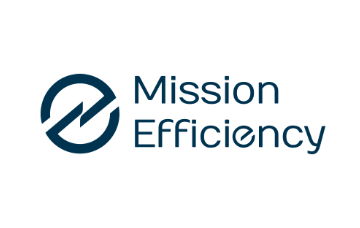This is How Mission Efficiency is Redefining Energy Efficiency
In 2023, the world reached a significant milestone in energy efficiency with the COP28 Global Renewable and Energy Efficiency Pledge and the first global stocktake of the Paris Agreement, calling on countries to double the global average annual rate of energy efficiency improvements to over 4% by 2030. While this marks a crucial step forward to accelerate energy efficiency progress, the key question remains: how do we get there?
On September 20, 2024, in Lisbon, Portugal, more than 30 energy efficiency experts, government representatives, civil society organizations, communications specialists, and behavior experts came together for the Mission Efficiency Charrette 2024, hosted by the Portuguese Energy Agency (Adene), Mission Efficiency, and the International Copper Association, in partnership with Empresa Municipal de Mobilidade e Estacionamento de Lisboa (EMEL). The goal: to develop a collaborative path for creating a new energy efficiency narrative for 2024-2025.
Why do we need a new energy efficiency narrative?
Energy efficiency is a key pillar of the clean energy transition, fundamental not only to achieving climate goals but also to advancing multiple Sustainable Development Goals (SDGs). Yet, despite its well-known socioeconomic benefits, energy efficiency progress remains slow. This raises important questions:
Have we successfully conveyed the full spectrum of benefits to decision-makers across all levels?
What is missing in our current narrative to elevate energy efficiency and inspire action?
How can we strengthen collaboration across sectors—such as renewable energy—and engage key groups like consumers and youth to accelerate progress?
Shaping a new energy efficiency narrative
Experts presented projects aimed at elevating energy efficiency, emphasizing the importance of leveraging existing resources and filling gaps rather than duplicating efforts. Experts included Lauren Boucher (CLASP), Victor Minguez (United for Efficiency), Rebecca van Leeuwen (European Energy Network), Valentina Bellesi (OECD) and Miguel Macias Sequeira -presenting a One-Stop-Shop to guide households.
Understanding governments, industry and consumers
During the Charrette, participants split into breakout groups focused on three target audiences: governments, industry, and consumers. Each group explored the specific challenges and opportunities within their sectors and brainstormed narratives that could drive concrete action.
A common thread across all groups was the lack of awareness about the crucial role energy efficiency plays in climate and development agendas. For governments, energy efficiency is often seen as a secondary priority, difficult to justify when compared to larger, projects like renewable energy or other investments that deliver more immediate, tangible results. In industry, it is frequently perceived as a hard “sell” to management due to high upfront costs. Consumers, meanwhile, face inertia issues, struggling to see the immediate benefits of energy-efficient choices and to trust in the technologies.
Looking Ahead
The work of the Charrette does not end here. Over COP29 and the next year, the Narrative Taskforce will focus on developing impactful messaging for both individuals and decision-makers at various levels. Among the key initiatives in development:
- Energy Efficient Life: Inspired by India's Mission LiFE, this campaign will demonstrate how small, individual actions can collectively lead to substantial energy savings.
- The Power of Energy Efficiency: Focused on policymakers, this initiative aims to unveil the powers of energy efficiency to fight energy poverty and inflation, boost productivity, enhancing energy security, curb carbon emissions, etc.
- Energy Efficiency Champions: Together with the Global Ambition Taskforce, this initiative will rally influential advocates across regions to champion energy efficiency and amplify its critical role in the global energy transition.
